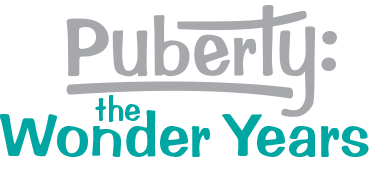Adolescence is a time when…
…sexual norms, beliefs, and attitudes are being formed. This makes adolescents particularly susceptible to sexual messages in media, such as television, movies, social media, and music. The parts of their brains that are responsible for critical thinking skills and decision-making are not yet developed, making it difficult for them to analyze these media messages. Media literacy is vital.
Studies show that adolescents rely on media as a major source of information. More than 80% report that their peers learn some or a lot about sex, drugs, and violence from television, movies, and other media. The average teenaged viewer of prime time network television sees 143 incidents of sexual behavior each week. These sexual messages are almost always portrayed in a positive light with little, if any, discussion of possible risks or adverse consequences. But that’s not all. About 80% of all network or cable television movies have sexual content, and about 60% of music videos portray sexual feelings and impulses, with many displaying provocative clothing and sexually suggestive body movements.[1]
Media literacy can provide students with the skills needed to understand and respond to the onslaught of media messages that bombard them.
What is media literacy?
- It is the ability to access, analyze, evaluate, and create media. Media literate youth and adults are better able to understand the complex messages we receive from television, radio, Internet, newspapers, magazines, books, billboards, video games, music, and all other forms of media. Source: Media Literacy Project
- It is the ability to access, analyze, evaluate, create, and act using all forms of communication. In its simplest terms, media literacy builds upon the foundation of traditional literacy and offers new forms of reading and writing. Media literacy empowers people to be critical thinkers and makers, effective communicators and active citizens. Source: National Association for Media Literacy Education
- It is a 21st century approach to education. It provides a framework to access, analyze, evaluate, create and participate with messages in a variety of forms — from print to video to the Internet. Media literacy builds an understanding of the role of media in society as well as essential skills of inquiry and self-expression necessary for citizens of a democracy. Source: Center for Media Literacy
4-Step Process for Teaching Media Literacy
The Center for Media Literacy’s “MediaLit Kit” suggests a four-step process for teaching media literacy in the classroom. This process is a spiral of inquiry called the Empowerment Spiral:[2]
- Awareness: Engage students in making observations and personal connections that create “ah-ha” moments of insights into media.
- Analysis: Students ask “what” and “how” questions to discover how the issue came to be, how the media is constructed, and what meaning they make of it.
- Reflection: Students look deeper into the ethics, values, justice, and other principles that are guides for individual and collective decision-making related to the media messages.
- Action: Students discuss and decide what, if any, individual or collective actions they will take as a result of their analysis of the media messages.
Sign up to receive a FREE sample lesson to see what Puberty: The Wonder Years is all about.
Resources:
- Media Literacy Now, resources for educators
- National Association for Media Literacy Education
- Center on Media and Child Health, Tip Sheets
- Media Smarts
- Common Sense Media
[1] Gruber, E. & Grube. J. W. (2000). Adolescent sexuality and the media: a review of current knowledge and implications. West J Med. 2000 Mar; 172(3): 210–214. Retrieved.
[2] Center for Media Literacy. Retrieved.



